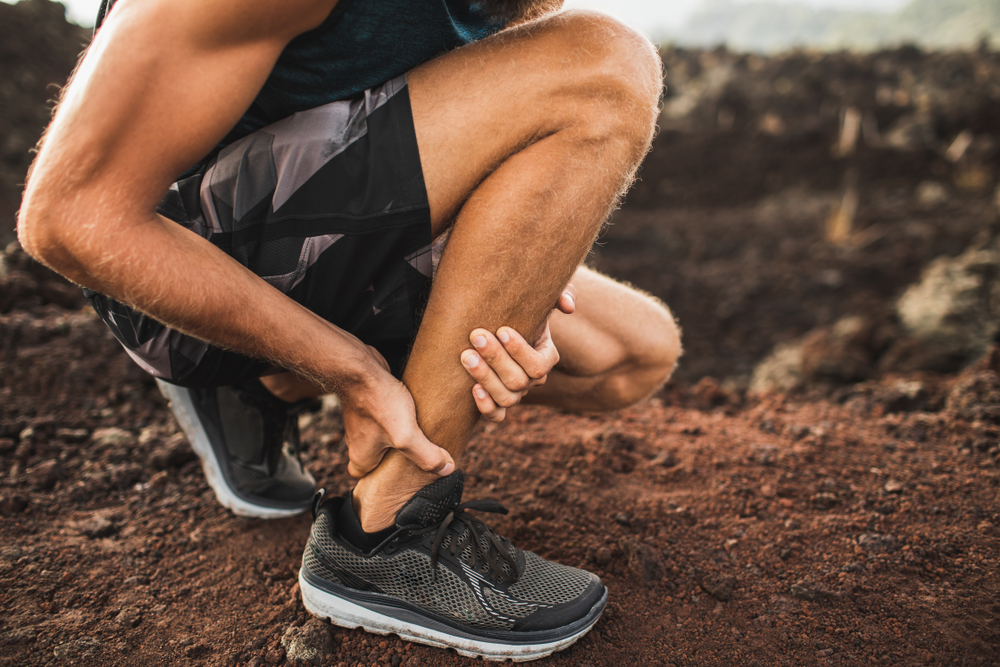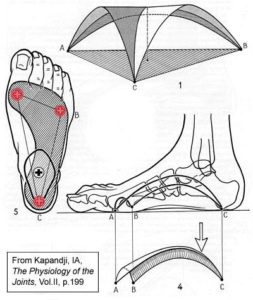There are basically two types of injuries: acute injuries and overuse injuries. Acute injuries are usually the result of a single, traumatic event such as: wrist fractures, ankle sprains, shoulder dislocations, and hamstring muscle strain. While overuse injuries are more common in sports than acute injuries, they are subtle and usually occur over time. This makes them challenging to diagnose and to treat. Overuse injuries are the result of repetitive microtrauma to the tendons, bones, and joints creating common injuries seen with many sports. Examples include tennis elbow, swimmer’s shoulder, plantar fasciitis, runner’s knee, jumper’s knee, Achilles tendinitis, and shin splints.
The human body has a tremendous capacity to adapt to physical stress. We tend to think of “stress” in the context of its negative effect on our emotional wellbeing, but physical stress, which is simply exercise and activity, is beneficial for our bones, muscles, tendons, and ligaments, making them stronger and more functional. This happens because of an internal process called remodeling. The remodeling process involves both the breakdown and buildup of tissue. There is a fine balance between the two, and if breakdown occurs more rapidly than buildup, an overuse injury occurs.
So who is at risk for a repetitive injury? The only proven predictor of a future repetitive injury is a past repetitive injury. 70% of injured runners will re-injure themselves within 12 months. (Beresini. New York Times. October 24, 2010) Training errors are the most common cause of overuse injuries. These errors involve rapid acceleration of the intensity, duration, or frequency of activity. Overuse injuries also happen in people who are returning to a sport or activity after injury and try to make up for lost time by pushing themselves to achieve the level of participation they were at before injury. The injury most often occurs as the rapid increase in training load overwhelms the stabilization of the injured joint. Therefore, proper stabilization of the joints being used during the training is critical in avoiding overuse injuries.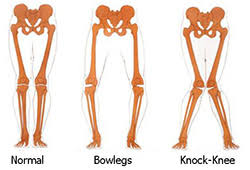
Genetic or acquired imbalances between strength and flexibility around certain joints predispose individuals to injury. Body alignment, such as knock-knees, bowlegs, unequal leg lengths, and flat or high arched feet, will impact overuse injuries. Many people also have weak links due to old injuries, incompletely rehabilitated injuries, or because of repetitive postures like prolonged sitting and bending.
Foot Arches and Injury
One example of those predisposed to a repetitive overuse injury are those with high or flat arches in their feet. People with high and low arches have impaired balance when compared to people with neutral arches (Tsai L, J Orthop Sports Phys Ther. 2006;36:942-953). This creates an instability of the kinetic chain of the lower extremity which leads to compensation and injury with increased training or load. In one study, 927 novice runners were followed for one year:
- 33% of very low arch runners became injured
- 25% of very high arch runners became injured
- 18% slightly high arch or neutral arch runners became injured
- Those with extremely low arches were unable to finish study as they could not run more than 186 miles a year! That is fewer than 4 miles a week.
The height of the arch can even predict what injuries will most likely occur. It has been shown that low–arched runners will exhibit more soft tissue injuries and a greater prevalence of injuries along the inside of their leg, especially at the knee and ankle. This overloading mechanism also occurs at the feet, predisposing these athletes to a greater risk for inner foot injuries such as plantar fasciitis and sesamoid problems under the big toe. High-arched runners are also at risk, with twice the probability for stress fractures. They are also more likely to have more injuries along their outer leg such as IT band syndrome, ankle sprains, and stress fractures of the 5th metatarsal. (Williams. Clin Biomechanics. 2001; 16, 341-347)
What is the treatment for overuse injuries?
Some tips for treating an overuse injury include:
- Cutting back the intensity, duration, and frequency of an activity
- Adopting a hard/easy workout schedule and cross training with other activities to maintain fitness levels
- Learning about proper training and technique from a coach or athletic trainer
- Performing proper warm-up activities before and after
- Using ice after an activity for minor aches and pains
If symptoms persist, a detailed treatment plan may be needed for your specific condition. This may include a thorough review of your training program and an evaluation for any predisposing factors. In our office we love to use Active Release Technique, Acupuncture/Dry Needling, and Chiropractic adjustments to facilitate healing. For more on these techniques check out a few of our articles on our Blog for more information.
Can overuse injuries be prevented?
Most overuse injuries can be prevented with proper training and common sense. Learn to listen to your body. Remember that “no pain, no gain” does not apply here. The 10 percent rule is very helpful in determining how to take things to the “next level.” In general, you should not increase your training program or activity more than 10 percent per week. This allows your body adequate time for recovery and response. This rule also applies to increasing pace or mileage for walkers and runners, as well as to the amount of weight added in strength training programs.
Always remember to warm up and cool down properly before and after activity. Incorporating strength training, increasing flexibility, and improving core stability will also help minimize overuse injuries.
Seek the advice of a sports medicine specialist when beginning an exercise program or sport to prevent chronic or recurrent problems. Your program can also be modified to maintain overall fitness levels in a safe manner while you recover from your injury. You should return to play only when clearance is granted by a healthcare professional. If you are need of a specialist like this, please contact our office. It is a great joy of mine as a chiropractic physician and Certified Strength and Conditioning Specialist to provide treatment, training advice, and more to our amateur and professional athletes.
Can overuse injuries be predicted?
Prediction of overuse injuries has been shown with the use of a few simple tests. Here are a few of the best.
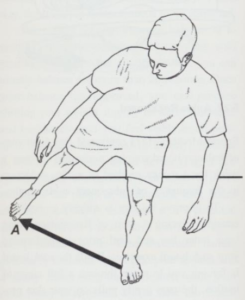 Star Excursion balance test:
Star Excursion balance test:
Reaching backwards from weight-bearing foot. While balancing on one leg, reach back with your toe and touch the farthest point on the ruler you can without losing your balance.
Runners with a reach difference greater than 4 cm are 2.5 times more likely to sustain an injury.
Single leg squat test:
This test highlights hip instability. This has been linked to a high predictability of knee injuries with jumping and soccer athletes as well as hip injuries with weight lifting and running. (Crossley K, Am J Sports Med. 2011; 39: 866.)
Correct Posture Improper Posture
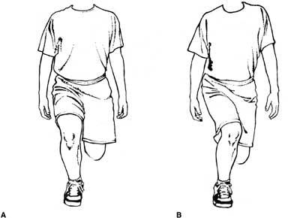
The Squat Test: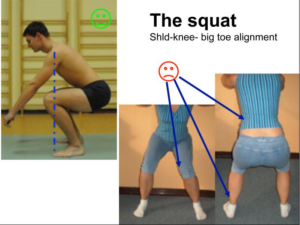
Observing a full squat can tell you a lot about proper ankle, knee, hip, and spinal movement.
Individuals who maintain proper loading (shoulders over knees, knees over big toe, well balanced, maintain arches in the foot, and symmetrical hip movement) will most likely experience fewer repetitive injuries.
Breathing and stability functions are codependent. Both breathing and joint stability must be maintained during any dynamic functional activity or exercise. When push comes to shove, the body will always breathe at the expense of stability. When training becomes hard only the best athletes can do both. For example, a tennis player with weak stabilization can not maintain proper postural diaphragmatic function when they become tired. This will create a competition between postural and respiratory function of the diaphragm leading to improper posture and stability of the shoulder. Decreased athletic performance and injury both become more likely when this occurs. If breathing is not normalized no other pattern can be. Core stability is not defined by strength of abdominals or back muscles (or any others), but results from optimal intra-abdominal pressure regulation.
Stabilization function of the diaphragm and abdominal and pelvic muscles
Initial Incorrect Correct
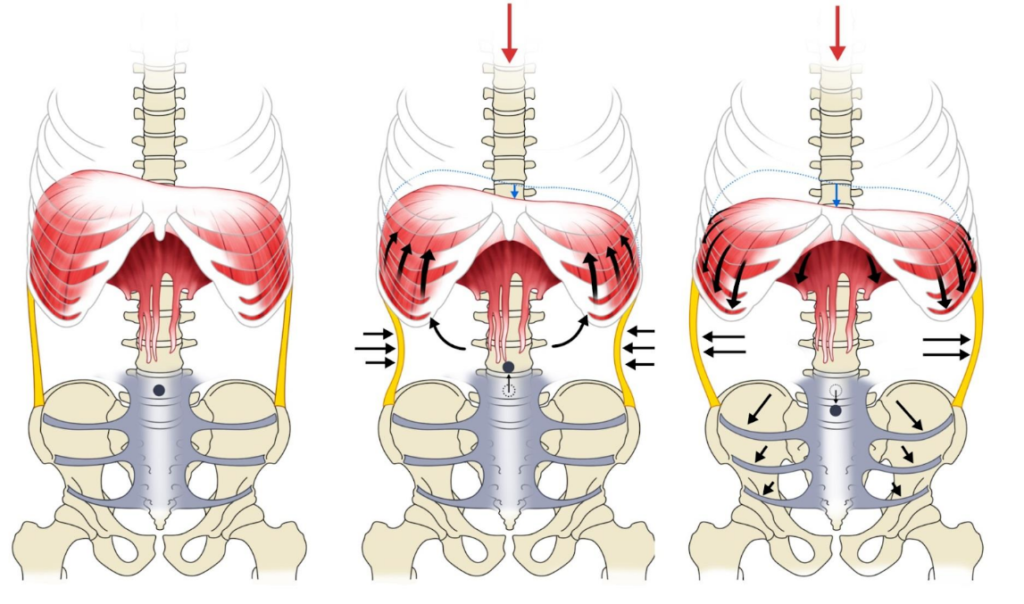
Diaphragmatic Stability Test: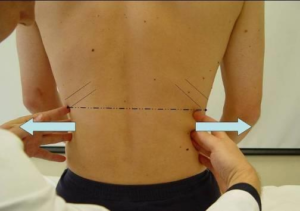
In a seated position place your fingers into the spaces of your lower rib cage. With a normal breath in, do you feel your lower ribs expand and widen or suck in and elevate? Proper breathing technique involves the lower ribs expanding, widening, and the inhalation involving the whole lower quadrant and pelvis. Failure to be able to do this at rest is predictable for a lack of diaphragmatic stabilization during activity. This can lead to compensation and injury.
Try these tests, evaluate your training program, and most importantly, pay attention to your own body. Repetitive injuries are preventable, so don’t let these nagging injuries prevent you from reaching your goals.
If you are struggling to overcome a repetitive injury reach out to our office and let us help you become healthier than you have ever been.

Daryl C. Rich, D.C., C.S.C.S.

